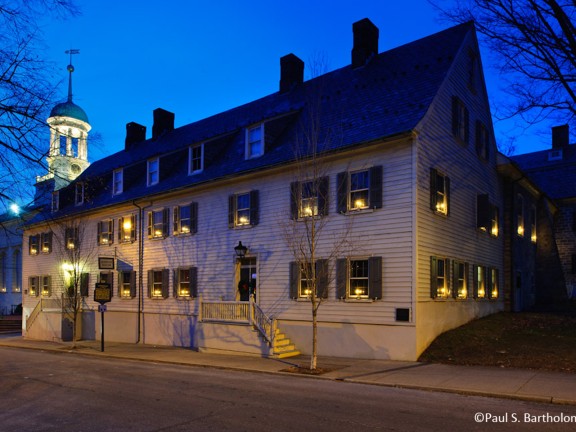Historical Moravian Bethlehem: Nominee for a World Heritage Site

The story of the modern United States might appear brief compared to the tales of ancient civilizations, yet rich history can be found right here in Pennsylvania. Historical Moravian Bethlehem, about an hour away from Philadelphia, is currently a nominee on the World Heritage List of UNESCO sites.
As America’s first multi-national nomination, Historical Bethlehem is one of three locations, representing significant Moravian Church settlements. The proposed nomination also names Herrnhut, Germany, which was established in 1722 as the “founding town” of the Renewed Moravian Church, as well as Gracehill, North Ireland, an important Moravian settlement founded in 1759.
This three-part nomination is also the proposed extension of the Moravian Church Settlement in Christiansfeld, Denmark, which is already a UNESCO World Heritage Site. By recognizing Bethlehem’s international reach, the historic district hopes to highlight the thriving global network established by Moravian believers, connected by faith and purpose.
The Moravian Church is one of the oldest Christian Protestant denominations, dated in the fifteenth century. In the 1730s, many Moravians left Germany for the American colonies to escape religious persecution and pursue missionary work. Religious tolerance advocated by Quaker principles made Pennsylvania an ideal location to resettle.
Bethlehem, found in 1741, was to be the principal Moravian center in the New World, a religious and administrative hub for missionaries in North America. The first settlers began laying the foundations of their communal society at the confluence of Monocacy Creek and Lehigh River.
The settlers intended to build a self-sufficient community to provide for themselves and missionaries on the colonial frontier. The Moravians lived in groups called choirs, organized by age, sex, and marital status, and built large institutional choir houses in the colonial German architectural style. Bethlehem operated under a General Economy in which its residents worked for the common good. Within two years of arrival, the Moravians built a sawmill, soap mill, oil mill, tannery, blacksmith shop, and brass foundry, and developed various other industries and trades throughout the century. Bethlehem is also home to the first pumped municipal water system in America.
The Moravian Church believed that all people should receive equal education and healthcare. Bethlehem holds one of the first schools to educate women in the colonies because Moravians believed that women had equal rights to men. At the core, Moravians advocated that all people should work together for the good of the community without prejudice regarding race, gender, or ethnicity.
For a time, Bethlehem operated successfully from its founding in 1741 to the end of the General Economy in the 1760s. However, the coming Revolutionary War and discord with neighboring communities led to its decline. Around 1806, Bethlehem began turning away from its founding ideas, becoming a more mainstream American settlement.
Bethlehem is a testimony to global exchange and education that existed long before the United States. GPA supports the work of historical Moravian Bethlehem and its candidacy for a World Heritage City so that Pennsylvanian history can be shared globally.

